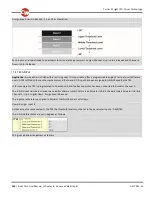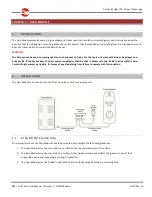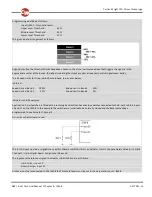
Curtiss-Wright | PG Drives Technology
SK77981-14
156 | R-net Technical Manual | Chapter 7 – GYRO Module
1.
Set Gyro Module Fitted to No.
2.
Select the correct Orientation number.
3.
Set the Turn Speed relatively fast (e.g. 30-50 %).
4.
Set the Forward and Reverse speeds to 5% max, 1% min.
5.
Attach the wheelchair to a PC programmer via the R-net dongle.
6.
Run the R-net Programmer application and view the Angular Speed Scalar reference in the Gyro Status window.
Sit in the wheelchair and apply full turn demand for at least 5s, then remove the demand to stop the turn.
CAUTION:
During this process traction must be maintained otherwise an erroneous value for the Angular Speed Scalar Reference value
will be obtained. Either reduce the turn speed if necessary or carry out the test on a suitable non slip surface.
7.
Record the Angular Speed Scalar Reference value from the Gyro Status window.
8.
Repeat steps 6 and 7 above for the opposite turn direction, and average the 2 results.
9.
Program the Angular Speed Scalar parameter with the calculated result.
10.
Now the Gyro Module Fitted option may be set to Yes and the Proportional and Integral gains can be programmed.
11.
Tune the Proportional and Integral Gains as required.
12.
Enable the dynamic gains and tune (optional)
13.
Select an appropriate Gyro Error Speed Limit value.
14.
Select a non gyro drive profile using the Gyro Profile Select parameter.
5.1
VERIFICATION OF SET-UP
Once the Gyro Module has been set-up as described above, it is important to thoroughly test the settings in different
environments to ensure optimum gyro performance.
a.
Test driving over loose or slippery surfaces to ensure direction is maintained.
b.
Test driving on uneven pavements.
c.
Test driving with one drive wheel on and one off of a grass surface.
d.
Test driving by pushing the wheelchair sideways, chair should maintain course.
e.
Test driving across pavements with drop curbs chair should maintain course






























